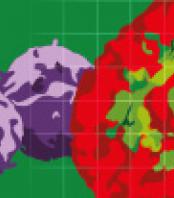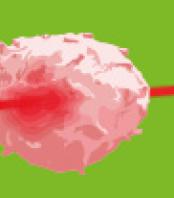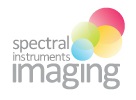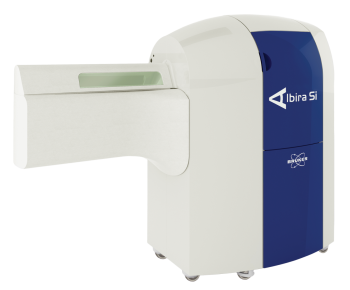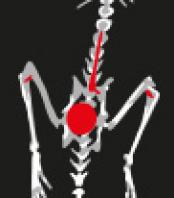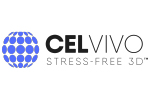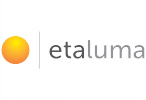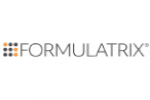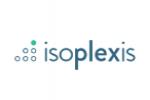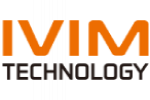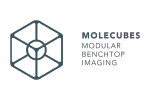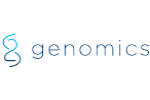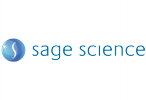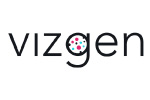The trusted PMOD tools are docked, reducing the number of windows used in your analysis workflows and benefitting from a unified data loader for our Scientific Data Management System (SDMS), standalone DICOM data and AUTODETECT loader for other formats. Multi-button menus have been simplified, making it quicker to find our many useful tools. Access to the powerful segmentation interface is improved, supporting workflows such as lung CT segmentation, and selection of image registration workflows is facilitated by a new fusion wizard.
High-throughput image analysis workflows are dependent on efficient performance across the complete pipeline. PMOD works continuously to bring you improvements to make this a reality. Notable performance improvements in version 4.4 include:
• Increased use of multi-threading for detailed segmentation tasks
• Improved display and navigation of large datasets such as high-resolution micro-CT
• Rapid preparation of brain atlases for PNEURO and PNROD tools
• Efficiency improvements when saving to remote databases, particularly valuable when using our Scientific Data Management System (SDMS), and rapid switching between database display modes
• Use of sampling in the ANTS spatial normalization methods to reduce the duration of matching calculations
• Multiple improvements in the AI processing pipeline – Enhanced data preparation and environment testing; automation of data preparation for segmentation applications; improved storage of data and training settings between runs
AI-powered improvement of deep nuclei segmentation for human brain MR Spatial normalization and segmentation of human brain data with pronounced atrophy is a known challenge. Normalization according to tissue probability and subsequent masking of atlas segments according to grey matter probability is widely successful in cortical regions, but can be insufficient for deep nuclei around enlarged ventricular spaces. The ANTS methodology can help to deal with moderate cases, but processing time can be substantial. Novel AI-based approaches yield an interesting solution for analysis in the subject space. A new hybrid-AI solution has been added to our popular PNEURO tool. This solution utilizes the trusted methods for cortical grey matter segmentation, but allows the user to replace the deep nuclei segments with the result of prediction with a trained neural network. The images below illustrate the successful result for cases that were challenging using conventional methods.
Improvements and Extensions across the PMOD Tools
All PMOD tools have undergone a continuous process of revision and improvement. Particular highlights are listed below:
General
– The base functionality, including the View tool, has been made substantially more powerful with the inclusion of 3D surface/volume rendering for image/VOIs and adjustment of hybrid data coregistration in the popular 3-row Compare display available in the View tool
– A new cylinder VOI tool has been added for efficient analysis of phantoms and use in vessel segmentation applications
– A new mask-based VOI functionality for rapid segmentation of high-resolution data such as micro-CT is available, taking advantage of the flexible Segmentation interface and allowing editing in 3D
PKIN
– Further development of the macro functionality for high-throughput kinetic modeling, including more convenient control of the starting parameters
– Numerous convenience features for evaluation of the fit results, including visibility of calculated delay, highlighting and convenient selection of active region when reviewing tabulated results
PCARDM
– Further development of the cardiac MR tool for AI-powered analysis of cardiac function from MR cine– including post-processing of the volume curve with outlier removal and smoothing; 3D model for left ventricle volume estimation with 2D data; wall-thickening analysis extended to 2D data
PNEURO/PNROD
– The acclaimed ANTS SyN methodology for spatial normalization has been extended to our popular human and rodent brain atlas workflow tools (PNEURO & PNROD)
– Extension of the output results to facilitate efficient batch kinetic modeling
PFUS
– A new wizard function makes it possible to launch coregistration workflows in the Fusion tool in a matter of seconds. The wizard allows rapid switching between rigid matching and elastic workflows as well as direct selection of the desired result page
– Optimization of performance during ANTS spatial normalization
– Addition of the mutual information cost function for ANTS, improving flexibility and performance
PAI
– Extension of the AI Framework including addition of generative-adversarial networks (GAN) and use of radiomics in classification
– Tools for generation of supplementary training data
